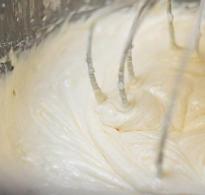Differences between natural and artificial vinegar. What is the difference between apple cider vinegar and table cider vinegar
Used to be vinegar they didn’t call at all what our housewives use today for dressing salads, extinguishing soda, marinating meat, fish and home canning- This is a 70% vinegar essence, which is kept away from small children.
Vinegar is different, and in other countries it has been known for thousands of years: they say that it was discovered in cooking by accident, but then they began to use it often, and modern chefs practically cannot do without it. It seems to many people that dishes become insipid and boring without vinegar, although this is not so - after all, each product has its own amazing, unique taste, but natural vinegars can really complement this taste, make it bright and special.
Today, you can freely buy any vinegar in stores: balsamic, wine, apple, rice, malt, coconut, sherry, cane, and, of course, synthetic, obtained at the end of the 19th century by the German chemist Hoffmann: it is cheap and stored for 1-2 years , although no one has ever heard that such vinegar - we call it table - has deteriorated. It is he who is added to salads and vinaigrettes, meat and fish dishes, sauces and marinades, dough and homemade preparations; it is sold as a 70-80% or 6-9% essence, but 3 or 4% vinegar should be used in cooking, so it must be diluted.
Unlike synthetic, natural vinegar is obtained by fermenting liquids containing alcohol: these are fruit and berry juices, honey, beer wort, wine, cider, etc. Acetic acid is formed due to the work of a special bacterium, so this process is quite natural, and natural vinegar is quite rich useful substances: these are organic compounds, pectins, aldehydes, esters, organic acids - ascorbic, citric, lactic, malic, so the aroma of real food vinegar is pleasant, and the taste is mild.
Natural vinegar is a few degrees weaker than synthetic, and leaves a residue when standing - with the vinegar that we call table vinegar, this does not happen.
There is also alcohol- it is also natural, but it does not have any aftertaste - unlike apple, wine, etc., therefore it is usually added to sauces, mayonnaise, marinades, and their taste does not change.
Distinguishing synthetic vinegar from natural is easy: on the label of the synthetic it is written - “acetic acid”, and on the natural one - “ Apple vinegar”, since our industry rarely produces other types of vinegar - they are purchased abroad. By the way, apple cider vinegar is also often synthetic - it's easier and cheaper.
Natural vinegar is sour, but it does not have a strong chemical smell, while a poisonous smell vinegar essence known to everyone - such vinegar is often produced not even by food, but by the wood chemical industry. Chemists also produce other types food acids: lemon, wine, apple, using sugar, salt and even coal, so that synthetic vinegar also has a taste and aroma, but does not bring any benefit, but it costs more than 2 times cheaper than natural. In many developed countries, it is forbidden to produce food vinegar in similar ways, and we will not talk about the use of synthetic vinegar in cooking - today you can buy natural, which also has some medicinal properties.
Almost any natural vinegar contains vitamins and tens of vitamins. minerals, so there is not much difference between them - it's a matter of taste. The reasonable use of such vinegar cleanses the body: the acids contained in it have an antimicrobial effect and help reduce "bad" cholesterol in the blood; many scientists believe that vinegar cleanses our cells of decay products, while healing and renewing the entire body - therefore, natural vinegars are often used in weight loss and rejuvenation programs. Slags are constantly formed in our body, and slightly acidic natural vinegars dissolve them and remove them, improving our metabolism, well-being and appearance: for this, it is enough to use 1.5 tbsp. any vinegar a day - it will not be harmful.
It is known that Paul Bragg, the world-famous naturopath and nutritionist, drank a glass every day. warm water with 1 tsp natural vinegar for heart health and maintaining visual acuity. For diseases of the nasopharynx and gastrointestinal disorders, you need to increase the dose: drink 2 tsp every day. vinegar in a glass of water with 1 tsp. honey - take until complete recovery.
Although synthetic vinegar is considered food, knowledgeable culinary experts do not use it even when preserving food - alcohol vinegar is preferable for home preparations: it will preserve canned food, and at the same time the taste will be mild and “non-chemical”.
Apple cider vinegar can also be used for the same purposes: it is good not only for marinades, but also for any salads, meat and fish dishes, as a seasoning for dumplings and manti. Fish and meat are soaked in this vinegar before cooking, and ready meals with it they become easily digestible and nutritious; besides, it slows down the reproduction of pathogenic bacteria - however, like any vinegar.
French wine vinegar is considered the oldest - it was first obtained by winemakers, and it comes in red and white - it depends on the grape variety. It is used in the same way as apple, and you can add it to any dish you like. It is very popular in salad dressings: white vinegar insist on herbs - basil, thyme, tarragon, etc., from which it becomes flavored; it is very good in a mixture with natural sunflower oil. To spicy greens red vinegar is suitable - it is often mixed with olive or nut oil.
Balsamic vinegar is a type of wine vinegar, and Italians love it very much - traditionally it is made from sweet white grapes. Prepare it in a special way- this is a laborious and long process, so the real balsamic vinegar expensive, but today there are many fakes. Italian vinegar can even be aged for a century, but the Spaniards and Greeks prepare vinegar using a different technology, which is much cheaper, but such vinegar does not have the qualities of a real one - it suits fruit salads, but you should not add it to other dishes - this will not make them better.
Sherry vinegar is considered elite, and it is very rare for sale - it can also be a century old, although 6-month-old vinegar is different special taste and aroma. It is produced in Spain, in Andalusia - if it is made elsewhere, it cannot be considered real. For meat salads he is perfect and does unique taste fresh vegetables with greens.
Rice vinegar is loved by Asian cooks - the Chinese, Japanese and Koreans love it, and it tastes mild - softer than apple. Use it for salads and vegetable dishes, as well as seafood dishes - rolls and sushi with this type of vinegar are known to everyone.
Vinegars today began to be produced not only from fruits, but also from berries: there is citrus vinegar, but there are also strawberry and raspberry vinegars - they perfectly complement and set off salads, meat dishes and poultry. When buying such vinegar, you need to look at the composition: manufacturers easily write “Raspberry” or “Strawberry” on the labels, but instead of wine or natural juice fruits can use flavoring and aromatic additives.
Contraindications to the use of vinegar
Vinegar is contraindicated in gastritis with high acidity and other gastrointestinal diseases, kidney disease, diabetes (although vinegar with Jerusalem artichoke in moderation will be useful), hypertension and obesity.
In general, vinegar is used little by little, otherwise even healthy man can earn gastritis, colitis or cirrhosis of the liver, and vinegar should be treated only after consulting a doctor.
Table vinegar is a product known to mankind since ancient times. Already in the III century BC, people used vinegar for various purposes. Vinegar was an indispensable component for the preservation of products (especially important in the absence of refrigeration units), various dyes were obtained with its help, and so on. Vinegar is widely used today. In any kitchen, you can find a bottle of vinegar, especially if the hostess is fond of canning.
But such a wide distribution of vinegar sometimes leads to poisoning - vinegar is confused with acetic acid, which is the main cause of accidents. Consider the similarities and differences between vinegar and acetic acid.
What is acetic acid
Acetic acid is also called ethanoic acid, and its chemical formula CH3COOH. Ancient times acetic acid obtained by fermentation grape wine or other products (for example, apple juice). During the Renaissance, metal acetates were used to produce acetic acid. Interestingly, the properties of this acid change depending on the dissolution, that is, aqueous solutions of acetic acid of different percentages show various properties and quality. For this reason, chemists for a very long time believed that acid produced with metal acetates was a different substance than that obtained from organic substances (from wine or juice). It was only in the 16th century that it was proved that, regardless of the method of preparation, it is still the same acetic acid.

In the 19th century, acetic acid was obtained by synthesizing inorganic substances: Carbon disulphide was used as feedstock.
Acetic acid in normal conditions is an aqueous solution with concentration 80% . There is also anhydrous or glacial acetic acid - according to appearance it resembles ice, hence the name. The concentration of such an acid is 99-100%. Acetic anhydride is also produced, but it is used in the pharmaceutical industry (synthesis of aspirin).

Like any concentrated acid, acetic acid is a hazard. There are cases when people mistakenly drank acetic acid, and this led to burns of the mucous membrane of the nasopharynx, stomach and esophagus, and chemical burns are considered the most severe even when it comes to skin burns, to say nothing of internal organs. In addition, ingestion of acetic acid causes other complications, for example, bleeding disorders, shock, and so on. Therefore, if you keep acetic acid at home, then it is necessary that it be out of the reach of children, and also stored in a container that cannot be confused with any harmless liquid.
ATTENTION! Fatal outcome occurs with the use of acetic acid from 20 ml and more!
What is vinegar
Vinegar has the same chemical formula, as acetic acid, and is the same chemical compound. The only difference between vinegar and acetic acid is that ordinary acetic acid is a concentrated acetic solution (about 80%), while vinegar is a strong aqueous solution, and its concentration is 6-9% .

Acetic acid is used mainly in production, and in domestic conditions, its weak solution is used, which we call table vinegar. Vinegar is used to preserve food, and in some cases as an antipyretic. It should be noted that vinegar does not serve as an antipyretic for internal, but only for external use - it is used for rubbing with high temperature, and also moisten the lotion with vinegar (in this case, the lotion stays cool longer).

You need to know that acetic acid irritates the mucous membrane of the nasopharynx, its effect is especially strong when heated, and in fact, often when preserving at home, you have to prepare a marinade by adding vinegar to boiling water. Therefore, it is required that the room where the home preservation products, well ventilated. It is also not recommended to be indoors during canning for people suffering from pulmonary diseases.
Getting vinegar from concentrate
In the "sunset season", when all the housewives rush to preserve vegetables for the winter, it happens that the usual table vinegar, but vinegar essence is on sale. If you're not going to descale kettles or pots (and acetic acid does an excellent job), then the essence can be easily converted into regular vinegar and then used for food preservation. In order for acetic acid to become vinegar, you just need to add water to it.
The most commonly used acid in everyday life is acetic acid. In everyday life, it is called differently: vinegar essence, acetic acid or table vinegar, meaning the same thing. However, this is not quite the right approach.
What are the differences between acid and essence, and what else do you need to know about vinegar so as not to harm yourself and others?
To understand how essence, vinegar and acetic acid differ from each other, one must carefully study their characteristics.
Acetic or ethanoic acid is an organic compound. AT pure form it is very rare. Most often, it can be found in trace amounts in the form of salts and esters in muscle tissue, the spleen, waste products, and plants.
In turn, vinegar essence is a concentrated aqueous solution of acetic acid. Essence is considered to be a composition with 30-80% acid content. However, the most common vinegar essence is 70%.
As for table vinegar, according to technical specifications, it is also a solution of acetic acid, but with a much lower concentration (usually 3, 6 or 9%).
Despite these fundamental differences All three terms are often used interchangeably.
Main varieties
There are two main varieties of vinegar: synthetic or industrial (also called table) and natural.

Natural is obtained as a result of the natural fermentation of alcohol-containing products when exposed to acetic acid bacteria, and can be very diverse:
- fruit and berry;
- alcohol.
As part of natural product, in addition to acetic contains other fruit acids, esters, vitamins and minerals. However, its acidity, as a rule, does not exceed 6%. This composition makes the spice not only fragrant, but also very useful.
Synthetic, in turn, is artificially created in industrial environment product. It is obtained by diluting synthesized concentrated acetic acid. The latter is sometimes called ice (at a concentration close to 100%).
Synthetic
The history of vinegar goes back to the 2nd millennium BC. The discovery of acetic acid was accidental. However, people quickly realized all its advantages and began to actively use it in their lives.

Initially, he had no culinary application. And only when a person fully appreciated the properties of acetic acid, it began to be used for canning food, and later cooking various marinades, and as a spicy spice.
With the growth of consumption, the need for the product also increased, which, in turn, led to the emergence of a synthetic analogue.
For the first time, ethanoic acid was obtained by the German chemist Adolf Kolbe. It happened in 1847. A few years later, the synthetic product was already produced on an industrial scale.
Currently, industrial vinegar essence is a highly demanded product that is found in almost every home.
Food grade synthetic acetic acid is made from alcohol base. In its pure form, it is a crystalline substance. When molten, it is a colorless liquid with a pungent odor.
The melting point of a pure substance is 16.75°C. However, it is much more difficult to determine at what temperature table vinegar freezes, since everything here will depend on the concentration of the solution.
Vinegar made in production, unlike a natural product, does not contain vitamins. And there are much fewer trace elements in it.

Concerning energy value, then industrial 70 percent vinegar, or essence, includes about 3 g of carbohydrates and does not contain proteins and fats at all.
The calorie content of vinegar in this case is 11.3 kcal.
Additional Information! In many countries, the consumption of solutions based on synthetic acetic acid is prohibited. However, in Russia and in the post-Soviet space, it is the cheapest, most accessible, and therefore in demand option.
What is vinegar for?
The greatest benefit comes from the use of a natural product, however beneficial features Synthetic vinegar also has it. These include:
- acid ability;
- antibacterial effect;
- antiseptic qualities;
- effective reduction of the glycemic index and others.
All this leads to the versatile use of vinegar almost everywhere.
At home
Among the useful properties of acetic acid, not the last place is occupied by a disinfecting effect, which is of great help to housewives when cleaning the house.

There are several ways to use vinegar as a detergent. So, it is used for:
- Cleaning of mirrors and glasses. Added to water when washing glass surfaces, it will allow you to get rid of streaks, stains and streaks without any worries. Similarly, it can be used to wipe glasses.
- Washing sinks and kitchen surfaces. To do this, it is enough to make an aqueous solution (1: 3) and add only a few drops of detergent to it.
- Cleaning an old frying pan. This will help a solution of water and vinegar in equal proportions. The resulting liquid must be poured into a pan and boiled. After such a procedure, there will be no traces of fat and soot on it.
In addition, vinegar can simply be added to the water when washing the floor - to disinfect the room. It will also help get rid of traces of adhesive tape on objects and even bad smell next to the trash can.
In folk medicine
Vinegar in any concentration is an excellent antiseptic. This property is successfully used both in traditional (for the production of medicines) and in folk medicine.
In the latter case vinegar solution, is most often used to reduce pain and as an anti-inflammatory agent.
In combination with other drugs, it is successfully used in the treatment of:
- polyarthritis;
- rheumatism;
- pediculosis and many other diseases.
It is also widely used as an antipyretic. it is necessary to prepare a solution of low concentration.
Important! Concentrated vinegar essence causes severe burns and its use without additional dilution is unacceptable!
In addition, vinegar treatment is carried out with nail fungus, joint pain, etc.
In cosmetology
In cosmetology, diluted vinegar essence is effectively used for:
- fight against age-related skin changes;
- getting rid of cellulite;
- acne treatment;
- elimination of dandruff.
In addition, vinegar will help get rid of calluses and make your feet smooth and beautiful.
In cooking
Cooking is by far the most popular use of acetic acid.

Neither canning nor can do without it. Vinegar is also used to loosen dough, preserve the color of dishes and give them a special piquant taste.
Soups, salads, the second - you can add spice to almost any dish.
Important! When using vinegar essence in cooking, it is especially important to observe the required concentration. Enough 20 ml of a concentrated solution, taken orally, to obtain severe burns of the mucous surface of the esophagus and stomach, up to death.
Storage of 70% vinegar essence
Not even all experienced housewives know that vinegar has a shelf life of 2 years. And having learned, they are interested in whether expired vinegar can be used in cooking and canning?
Here it is worth considering that the manufacturer sets the expiration date, which is called "with a margin." In addition, acetic acid does not apply to perishable products. Therefore, the use of slightly expired acid is allowed.
If the expiration date has expired a long time ago, and it’s a pity to pour vinegar, you can easily find another use for it - for example, as a cleaning agent when cleaning.
The best storage conditions for the essence are a tightly closed glass container. It is strongly not recommended to keep it in a plastic container - interacting with plastic, vinegar loses its qualities and becomes harmful to health.

Each time after use, the vinegar should be put away in a cool, dark place out of the reach of children.
Important! If for some reason you poured vinegar essence into another container, be sure to sign it! This will eliminate the mistaken use of a concentrated solution as diluted vinegar and save you and your loved ones from accidents.
Is vinegar harmful?
If used incorrectly, 70% vinegar concentration can be not only harmful, but also very dangerous. However, a solution of a lower concentration can cause irreparable damage.
The main harm of vinegar essence is the effect of its vapors on the mucous membranes of the upper respiratory tract. At internal use it can also adversely affect the mucous surfaces of the stomach and intestines.
If you overdose or use an overly concentrated solution, the harm of vinegar becomes deadly.
Precautions for using the product
In order to minimize harm to the body when using vinegar essence, it is necessary to carefully monitor that the concentrated solution does not get on the skin and mucous membranes. Otherwise, it may cause severe chemical burns.

If contact of the acid with the mucous membranes or skin could not be avoided, then the damaged area must be washed large quantity water.
You also need to know about the contraindications to the use of this spice. For example, doctors do not recommend adding vinegar to food for people with stomach diseases (ulcers, gastritis) and other disorders of the gastrointestinal tract.
With caution and after consulting a doctor, you can use acetic acid in medicinal purposes at:
- diseases of the cardiovascular system;
- pregnancy and lactation;
- children under 3 years of age and the elderly.
Important to remember! Regardless of the dilution and concentration, vinegar is not recommended for enemas, vinegar lotions are contraindicated for people with sensitive skin.
If necessary, you can replace a strong solution of vinegar with other products. Citric acid is considered one of the best analogues.
For example, marinades with it have a less harsh taste and are better stored. Approx 1g citric acid equal to 10 g of 3% acetic solution.
Also, instead of a solution of vinegar essence, you can use cranberry juice, red currant or vodka.
So, now you know that acetic acid, essence and table vinegar are not exactly the same concepts, although they have common “roots”. And in order to use the spice correctly, it is necessary to take into account the differences and know exactly what the fundamental difference between these substances is.
In addition, we must remember that vinegar is a fairly strong chemical. Its benefits and harms to the body largely depend on the concentration of the solution and compliance with safety measures.
What do you know about vinegar? Basically, knowledge is limited to the fact that this liquid is used for pickling and canning, and also for household needs, trying to clean the surface, or make it shine. Almost no one thinks about what vinegar is. Even fewer people know how one type of vinegar differs from another, although there are not so few types of vinegar. The most common of them are table, fruit and balsamic.
Table vinegar: useful properties and contraindications
What is vinegar and how to use it for medicinal purposes? Table vinegar is a 3-15% aqueous solution of edible acetic acid, which is obtained by diluting vinegar essence with water, i.e. 80% aqueous solution food grade acetic acid produced under industrial conditions by acetic acid fermentation of alcoholic liquids.
There are two types of vinegar, the use of each of them is excellent. Synthetic vinegar is obtained by diluting concentrated acetic acid obtained from non-food raw materials. Natural vinegar is made from ethyl alcohol, fruit juices and fermented wine materials. In Russia, the consumption of natural vinegar is about 200 ml per person per year, and, for example, in Bulgaria - 4 liters, in Germany - 3.7 liters. In countries such as France, the USA, Bulgaria, the use of synthetic vinegar for food purposes is prohibited.
What is vinegar useful for and to whom is it contraindicated? Speaking about the benefits of this product, first of all it is worth mentioning it. beneficial effect on the metabolism in the body. In addition, due to the unique composition, this product can effectively cleanse the intestines of toxins and toxins.
Despite the beneficial properties, vinegar also has contraindications for use as a remedy:
- the presence of cardiovascular diseases;
- damage to the skin (vinegar compresses are prohibited);
- during menstruation in women;
- extremely weak immune system.
Vinegar or its solution is not used to prepare enemas, vinegar lotions are not recommended for people with sensitive skin types. For medicinal purposes, only natural vinegar should be used. Before starting the treatment of any, even the simplest disease, it is necessary to consult a doctor.
What helps table vinegar and what they treat
Vinegar is one of the oldest medicines. That vinegar is being treated was known more than ten thousand years ago in Egypt, where it was obtained from date wine.
Before the advent of antibiotics, for many centuries infectious diseases were treated with vinegar, suppurations on the skin were treated with its solution, used for intestinal disorders and for cleansing internal organs.
Wounds were washed with this remedy, compresses and wraps were made with it for bruises and hematomas.
Acetic solution was drunk to get rid of fever, and was also used as a rejuvenating agent.
During plague epidemics, medieval healers used vinegar to preventive purposes And How remedy. Residents of the countries of the East to this day consider vinegar a means to achieve beauty, health and long life.
How else does vinegar help, and what diseases can be treated with it? Vinegar helps in the fight against fungus, lichen, they treat diseases of the stomach and intestines, relieve headaches, it helps with varicose veins, etc. In addition to treatment in traditional medicine, vinegar has found application in cosmetology as a component of creams, lotions, tonics and many others funds.
Indications for the use of vinegar:
- infectious diseases of the respiratory tract - tonsillitis, pharyngitis, etc.;
- diseases associated with joints and bones, such as osteochondrosis, arthritis, rheumatism, etc.;
- skin and hair problems;
- obesity or overweight.
Apple and grape vinegar: what are the benefits and medicinal properties
There are many types of fruit vinegar (apple, grape, blackberry, raspberry, etc.) that are used medicinally and cosmetic purposes. They can be prepared at home from fresh fruit and berries.

The most popular fruit vinegars in folk medicine are apple and grape. Let's dwell on them in more detail.
Apple vinegar - special kind acid, which is obtained naturally during the fermentation of apple juice.
What are the health benefits of apple cider vinegar? This product improves metabolism and helps to reduce appetite and lose weight, removes toxins from the body, cleanses and whitens the skin, helps in the treatment acne, increases blood clotting.
What is in apple cider vinegar and how can you make this product at home? Apple cider vinegar contains organic acids such as succinic acid. Our body produces up to 200 g of it daily and uses it for our own needs. succinic acid is necessary for a person, therefore, an artificially obtained substance is currently actively used for the treatment and prevention of many diseases. By using apple cider vinegar, you will get it in its natural form.
Apple cider vinegar becomes tastier and healthier if you get rid of its pungent smell, enrich it with valuable components, insisting on fragrant herbs. Coriander fruits, tarragon, barberry and juniper berries are suitable.
Using apple cider vinegar in reasonable amounts in vinaigrettes and adding it to borscht and, you can reduce the risk of blood clots.
You can make your own apple cider vinegar.

What is balsamic vinegar and what does it contain
And what is balsamic vinegar and how is it used in medicinal medicine?

Balsamic vinegar It is a dark viscous liquid with a spicy aroma. It is prepared from grape juice with addition grape vinegar, which are gradually aged in aromatic wood barrels (ash, oak, chestnut and cherry).
This vinegar contains , . It has an antimicrobial effect, reduces inflammation, rejuvenates the skin and prevents its aging, reduces hair loss. Balsamic vinegar is divided into traditional Italian and industrially produced analogues, which differ from the first in a lighter color and less intense aroma. It is used as a seasoning, adding only to ready-made dishes (salads with meat, as well as marinades for meat). Only traditional Italian vinegar is suitable for treatment, which does not contain preservatives and dyes, has an exposure of 12 years.
The birthplace of balsamic vinegar is the city of Modena in Italy. For its preparation use a large number of grape syrup. Withstand it for at least 12 years, periodically pouring into barrels of different woods. Taking into account natural evaporation and technology, up to 15 liters of balsamic vinegar are obtained from 100 liters of raw materials.
Mankind has been familiar with vinegar for several millennia as a reliable preservative and seasoning for dishes, disinfectant and medicine. Vinegar was seasoned with dishes in ancient Rome and Greece, in Babylon, used in medicine and purified water. For thousands of years, man has not come up with a more universal remedy.
Conventionally, all types of vinegar can be divided into two types depending on the method of preparation: synthetic and natural.
Synthetic vinegar
Synthetic (it is also called table) is preferred by many housewives in our country, using it for acidifying dishes and sauces, for canning, for loosening dough. With the help of vinegar, housewives restore color to fabrics and remove bad odors from dishes.
It is a product of chemical synthesis of natural gas or sublimation of wood. Synthetic vinegar was first synthesized by the German chemist Hoffmann in 1898, since then the technology for its manufacture has undergone many changes, but the essence - artificiality - has remained unchanged. The strength of synthetic vinegar is 7-9%.
Natural types of vinegar
Natural vinegar is the result of the fermentation of alcohol-containing raw materials with the help of acetic acid bacteria. Natural vinegar is obtained from grape wine, apple cider, beer wort, fermented fruit and berry juices. Therefore, natural vinegar contains not only acetic acid, but also other fruit acids, such as malic, citric, lactic, ascorbic, aldehydes, pectins, esters and other organic compounds. The strength of natural vinegar is 4-6%. Natural vinegar, unlike table vinegar, may contain a slight sediment.
Apple vinegar
Apple cider vinegar comes in two forms - traditionally liquid and more. modern version- in the form of tablets. The most popular is liquid apple cider vinegar, as it has many applications, from cooking to cosmetology. Apple cider vinegar is used in diets, there are body rejuvenation systems based on the use of apple cider vinegar in a certain way. Apple cider vinegar combined with honey is recommended to be eaten ethnoscience as a multivitamin, tonic.
In cooking, apple cider vinegar is added to various sauces to meat and fish dishes, in seafood, and also added during canning, which gives the final product a piquant flavor. Apple cider vinegar is also used in the manufacture of puff pastry according to a special recipe.
Apple bite received such widespread use due to its chemical composition. It contains organic acids (acetic, malic, citric), minerals (potassium, sodium, calcium and others), vitamins (A, C, group B).
Balsamic vinegar
Balsamic vinegar is also called Modena and Royal. Modena - by the name of the Italian town of Moden, in the vicinity of which grapes grow with high content sugar from which balsamic vinegar is made. After the grape raw material undergoes fermentation, it is placed in barrels, where the vinegar will have a 12-year "exposure". Every year, the contents of barrels lose about ten percent of their volume. And at the output of 100 liters of raw materials, it receives no more than 15 liters of high-quality balsamic vinegar. Truly royal extravagance!
Balsamic vinegar is given sophistication not only by its delicate taste, but also by a special attitude towards it. In past centuries, balsamic vinegar was considered a good dowry even for wealthy brides. Currently, in Italy, no more than 300 families, including even Luciano Pavarotti, can make it, families reliably keep the secrets of its preparation.
Balsamic vinegar is added to salads and soups, used to marinate fish and seafood, eaten as a thin sauce with cheeses and even ice cream. Real balsamic vinegar is an expensive product, a 200-gram container can cost 100 euros and more.
Wine vinegar
If balsamic vinegar is a product culinary excellence Italians, then wine is the brainchild of the French. Wine vinegar made from wine, and in France knows a lot about wine. Wine vinegar comes in white and red, depending on the wine.
The classic red bite is made from Bordeaux wines: Merlot, Cabernet. It, like balsamic vinegar, is "aged" in oak barrels, however, not so long.
Traditionally, red wine vinegar is used in cooking as a base for sauces, marinades, and seasonings.
White wine vinegar is lighter in taste and is made from dry white wines. The fermentation process does not take place in expensive wooden barrels, but in cheap stainless steel containers. This approach makes white vinegar cheaper than red vinegar. The scope of white wine vinegar, like red, but the taste of the dishes is less saturated, light. In addition, experienced housewives often replace white wine in recipes with white wine vinegar with added sugar.
rice vinegar
Rice vinegar comes from Asia. It is not known for certain which of the Asian countries was the first to learn how to ferment rice must to obtain vinegar, but until the middle of the 17th century rice vinegar was considered a condiment only for the rich.
Rice vinegar, like everything oriental, has a subtle, soft taste slightly sweet aroma. There are several varieties of rice vinegar, it can be white, red, black, depending on the seasonings that are added to it. Japanese rice vinegar is traditionally milder than Chinese.
In our country, and indeed throughout Europe, rice vinegar became famous thanks to the widespread craze oriental cuisine, including sushi, where it is an indispensable component. In addition to sushi, rice vinegar is added to sauces and marinades, in vegetable salads and even drinks.
cane vinegar
Cane vinegar is obtained from the process of fermenting syrup. cane sugar. Cane vinegar is not very common throughout the world. First, because of the specific taste. And secondly, because of the high cost. Philippine cane vinegar is not very popular among Europeans, connoisseurs advise giving preference to American, which is prepared in the south of the United States. However, its price is too high. An even more expensive and rare cane vinegar comes from the island of Martinique. Gourmets are ready to pay any money for it, but it has almost completely disappeared from store shelves.
Cane vinegar is used mainly when frying meat, mainly pork and lamb.
malt vinegar
Malt vinegar is favored in the kitchens of Great Britain, and outside of England this type of vinegar is practically not common. It is prepared from fermented beer malt wort, which gives the taste of vinegar a delicate fruity tint. The color of malt vinegar varies from light yellow to burnt sugar.
Malt vinegar has a wide range of uses in classical english dishes, in sauces, salads, soups and even some types of pudding.
Berestova Svetlana
When using and reprinting the material, an active link to is required!






